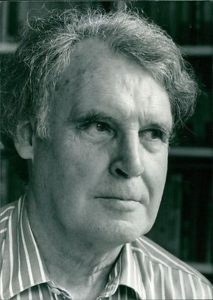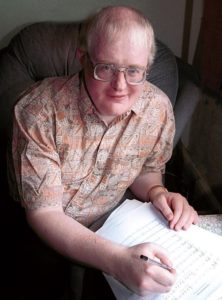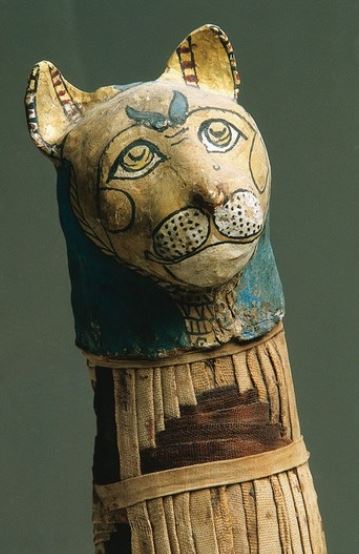I want him to have another living summer,
to lie in the sun and enjoy the douceur de vivre –
because the sun, like golden rum in a rummer,
is what makes an idle cat un tout petit peu ivre –
I want him to lie stretched out, contented,
revelling in the heat, his fur all dry and warm,
an Old Age Pensioner, retired, resented
by no one, and happinesses in a beelike swarm
to settle on him – postponed for another season
that last fated hateful journey to the vet
from which there is no return (and age the reason),
which must soon come – as I cannot forget.
Several years ago, this poem was visible in some carriages of the London Underground. Its title is: A 14-year old convalescent cat in the winter. Travellers were reminded by the end of the poem:
as I cannot forget
that it wasn’t just a sentimental, mawkish story, but a memento mori.
 The author, Gavin Ewart (1916-1995), was an important figure in the British literary scene. Read the obituary by Anthony Twaite in The Independent (24 october 1995) and the complement, published the next day, by David Gascoyne. Reading these texts we realize how this sometimes humorist, so witty, had probably secret wounds and tried to smile while dealing with human problems like love and death.
The author, Gavin Ewart (1916-1995), was an important figure in the British literary scene. Read the obituary by Anthony Twaite in The Independent (24 october 1995) and the complement, published the next day, by David Gascoyne. Reading these texts we realize how this sometimes humorist, so witty, had probably secret wounds and tried to smile while dealing with human problems like love and death.
The poem quoted here is sometimes used in funeral ceremonies. It is read here by the author.
It is first of all a “cat poem”, a genre which is well illustrated in the language, from Keats (and before…) to Phillip Garcia who recently wrote (on May, 16th 2017) a poignant elegy using as a title an expression by e.e. cummings: “goodbye, Betty, don’t remember me“.
Without going back to the egyptian cat mummies where the equation of cat and death is a visible metaphor, it is, today, a familiar situation, always difficult to face, for us, humans, who use the acronym PTS for “put to sleep” (with a verb which is also an understatement).
The poem has this generic power, with an indefinite article in the title: it is a 14-year old cat…
That it is addressed to a demanding reader is obviously manifest in the French expressions (stanza 1, lines 2 and 4), but in a very subtle way in the unusual plural used with an abstract word: happinesses (st.2, l. 4) and in particular in this subject inversion: postponed … journey (st.3, l.1 and 2) and also the use of three adjectives, without a comma, gradually lengthening, from one syllable to two, and then three: the last fated hateful journey (st.3, l.2).
Some people have considered it too sentimental : the last happy days of an old cat. As we said before, the poem is also about the human condition. Gavin Ewart was well aware of the probem when he wrote the following text (Be my guest, 1975), at the same time explanation and poem:
Cat sentimentality is a human thing. Cats
are indifferent, their minds can’t comprehend
the concept ‘I shall die’, they just go on living.
Death is more foreign to their thought than
to us the idea of a lime-green lobster. That’s
why holding these warm containers of purring fur
is poignant, that they just don’t know.
Life is in them, like the brandy in the bottle.
One morning a cat wakes up, and doesn’t feel
disposed to eat or wash or walk. It doesn’t panic
or scream: ‘My last hour has come!’ It
simply fades. Cats never go grey at the edges
like us, they don’t even look old. Peter Pans,
insouciant. No wonder people identify with cats.
The poem A 14-year old convalescent cat in the winter was set to music by David W. Solomons.

“In the 1980s I wrote a series of musical settings of the poetry of Gavin Ewart and performed them at a concert in 1987 in honour of the poet in London, together with recorder player “Tasse” (Nigel Tasane). Gavin and his wife were very pleased with the concert and a few years later, when I sought to register the songs for publication, he kindly gave me permission to publish them. Sad to relate, he died shortly after that, but his individualistic poetry still lives on.”
Expressed in a quiet and haunting way, this melody (entitled The Venerable Cat) can be heard here.

David W. Solomons sings (countertenor) and plays the guitar, Nigel Tasane (aka Tasse) accompanies him on the recorder.

[I published an article in French on the poem and the melody in my blog Autour de Charles Bordes in august 2011, and in the periodical ça use, ça use #12 in april 2015. The photograph of Gavin Ewart is by Mark Gerson (Camera Press London). The mummy in the picture is in the Musée du Louvre ; it can’t be precisely dated: it belongs to the Late Period, between 664 BC and 332 BC.]
